Ellen Tsagaris, Ph.D.
May 28, 2011
“Antique Haunted Doll. Health, Wealth and Good Fortune.” http://cgi.ebay.com/ws/eBayISAPI.dll?ViewItem&item=220824235795&assPageName=AD …
Creepy doll blog for conclusion:
“They Want to Play with You;” Cinematic Demonic Dolls and Demonic Child’s Play in Stuart Gordon’s Dolls; Interview with the Vampire, Toy Story III, The Bad Seed, The Chucky Films, Dead Silence, Koontzs’ Intensity, and The Tommy Knockers.
Play often rewards us with a thrill or a sense of wonder. But, just over the edge of play, uncanny objects like dolls, automata, robots, and realistic animations may become monstrous rather than marvelous. . . . Play is surely difficult to define, but demarcating its porous boundary—where what one moment creates joy can in the next, cause dread—is a useful step toward describing this shifting phenomenon.
Scott G. Eberle, “Exploring the Uncanny
Valley to Find the Edge of Play”
If there Is a dead body in the room—
Cover it,
That it does not become the gruesome
Doll of the (childish) house
That he does not play with it
Erecting it,
Against . . .
Rainier Maria Rilke, The Duino Elegies
Dolls are “The Other.” They can appear alive, yet are peculiarly “dead.” They can be a child’s confidante, or a portrait of depravity and cruel weapon as are voodoo dolls and certain talismans. Freud’s essay “The Uncanny” and Rilke’s essay “The Dolls” foreshadow how dolls are appropriated in horror films to become weapons of terror or animated small corpses, intent on evil acts. Children can also be monsters; depraved creatures that, along with their demonic toys, are the antithesis of idealized childhood innocence. In fact, books like the recent Creepy – Ass Dolls and websites like The Haunted Doll Museum , Headless Historical Dolls, and The Shelter for Misfit Dolls exploit the darker side of dolls and child’s play to the delight of thousands of fans. There is even a haunted dolls category on eBay, where the dolls sold have a “haunted history.” One recent offering says that the doll, a bisque doll made in the late seventies or early eighties, “promotes a long healthy life for her owner as well as bestows great amounts of money to her owner and their family” (Antique Haunted Doll 1). For example, her owner might find money on the ground. The description on eBay goes on to say that there is a short chant or mediation to get the doll to work. (Ibid). Dolls in horror literature of all media do want to play with you, but not in the safe, innocent, or productive sense we usually associate with doll play. Horror dolls don’t encourage nurture; they encourage self-defense. This paper will explore how little girls and their most traditional of toys, dolls, are appropriated in the horror films named above to create a particularly grim and terrifying experience for film audiences.
Intro: Dolls were not meant to be toys for children, initially, but were ritual objects, tomb figures, representations of deities [The Goddess figures or Venuses of Willendorf], ancestor images, fetishes, Santos, objects d’art and utilitarian objects. Both Carl Fox [The Doll] and Max von Boehn [Dolls] explore the darker ancestry of what has now become a children’s toy and popular collectible. In some ways, doll horror films hearken back to the time when dolls were more than trivialities and ephemeral childhood entertainments to explore their darker side, and the uncanny effect these miniature human portraits have on us in a cinematic context.[The cult classic Trilogy of Terror exploits the darker side of fetishes and ritual figures when one comes to life and wreaks mad-cap havoc on Karen Black].
So sacred were dolls or figurines to Stone Age people, that they lacked facial features, for it was taboo to look on the face of the deity or God [similar to current religions, both Islam and Amish, that do not portray human faces on dolls, statues, or paintings, or photographs; it is an ancient prohibition against graven images]. Doll “murders, burials, and executions” are an integral part of play; witness Frances Glessner Lee’s miniature doll murder scenes in The Nutshell Series of Unexplained Death and the Lincoln boys’ doll Jack, which was repeatedly court martialed and executed. Dolls are often given to abused children not only to comfort them, but to encourage them to discuss their own physical and mental abuse. Funerary dolls were common in the ancient world, and dolls are cremated in temples in modern Japan.
Both Louisa May Alcott and D.H. Lawrence write of dolls being burned on sacrificial, childish altars, (Alcott, Little Men, 29; Lawrence, Sons and Lovers, 70-71). Maggie Tulliver abuses her dolls as a “Fetish” in The Mill on the Floss” when she is upset and frustrated (Eliot, Mill, 20). One of the props in a recent production of Jane Eyre (2011) is a burned doll. The doll is a good replica of the so called Milliner’s Models of the 1830s, made in Germany with elaborate molded hairdos of papier mache with papier mache limbs and kid bodies.
Today, we have circled back to the idea of dolls as fetishes of sorts; we have only to review the numerous publications devoted to dolls, especially Barbie and ball-jointed Asian dolls. There are national and local doll clubs all over the world, and the rise in creation of artist or collectors dolls as burgeoned since the 1980s. Dolls are often status symbols, and I have seen young women carrying Blythe dolls, with their enlarged heads and oversized mechanical eyes, and Japanese ball-jointed dolls with their interchangeable wigs and heads, down the street. American Girls fill the same need for young girls, and it is not unusual to see the well-dressed pre-teen taking her American Girl with her to shops and restaurants, especially the American Girl Place shops created just for them. As Eberle writes, “Monstrosity and oddity gave way to a fascination with the cute” (189). “Eva-Maria Simms has written of dolls that “[s]he profoundly attracts the child’s desire, evokes passionate love and hate, and fulfills needs that are difficult to articulate in any other way than through play” (Simms 664).
Children not only enjoy burying and abusing their toys, as exemplified by the examples above and by the Toy Story Films, they often abuse them as sheer acts of aggression. Not all children who abuse toys are frustrated and upset themselves. Also, :”grossology ” or racy children’s rhymes and cruel jokes are a fascinating part of childhood. As the Baby says in Rugrats when asked why babies are so fascinated with “poop,” “Where do we start!” Noted author Brian Sutton-Smith discusses in” Play Theory, A Personal Journey and New Thoughts,” how he collected 155 kids’ jokes from local school which he and his staff dubbed “ Cruel Jokes, Bloody Marys, Hate Jokes, Ivy League Jokes, Sadist Jokes, Gruesomes, Grimmsels, Sick Jokes, Meanie Jokes, and the Comedy of Horrors” (Sutton-Smith 92). Sutton-Smith then created the following subcategories Murder, Cannibalism, Corpses, Beasts, Excrement, and Indifference to the Young.
Why do children love such “malodorous” and antisocial jokes and play? Sutton-Smith notes that many experts call this “intentionally contrary type of play” ” flexible, divergent thinking, . . anarchism . . . desire, interdeterminism, psychic masochism, dark play, inversion . . subversion, mockery, willfulness, illicit play, cruel play, masks, festival hazing, disorderly exaggerative, irrational powers, grievance syndromes and grotesque realism “ ( 93). He notes that of the 155 jokes he collected and studied, nearly all illustrated “disrespect of conventional behavior or conventional thought or good manners” (96). Sutton-Smith observes that the children he studied in 1959 and 1981, the jokes constituted “rebellious expression”, and imply that “play allows children to overcome the stuffy and bossy adult world they encounter”(96). Horror movies featuring demonic toys and dolls allow filmmakers, and their audiences, to do the same. They, too, are a reaction against the “stuffy norms” of society, and maybe film making. They incorporate the doll’s early history shrouded in magic and ritual, if not outright witchcraft, and use the doll and her history to rebel against traditional notions of play and entertainment. As with many horror films, the demonic doll films show some form of “good” triumphing over evil.
As Stephen King writes in his essay, “Now you take Bambi . . .” [I]t’s been
suggested again and again that such entertainment offers us a catharsis – a chance to enter
for a little while a scary and yet controllable world, where we can express our fears,
aggressions, and possibly even hostilities. Surely no one would suggest that children do
not have their fears and hostilities to face and overcome; those dark feelings are the basis
of many of the fairy tales children love best.”
Stuart Gordon’s Dolls- Defining the Uncanny - Still, good triumphs over evil through some very uncanny effects. Cute dolls who come to life as murderous demons are the uncanniest evil effect of all, perhaps because dolls are images of ourselves.
But, why are among all toys are dolls constantly used as the evil elements in horror film and literature; why are they the most uncanny? Since Freud, and even earlier, writers have explored the thesis that dolls are uncanny through a definition of their own creation. Freud writes in his famous essay, “The Uncanny,” that “the word is not always used in a clearly definable sense, so that it tends to coincide with what excites fear in general; yet we may expect that a special core of feeling is present which justifies the use of a special conceptual term (1). Freud discuss the work of Jentsch, and states that the latter “quite rightly lays stress on the obstacle presented by the fact that people ‘vary so greatly in their sensitivity to this quality of feeling” (1). [The study Eberle writes about concerning the two different baby dolls bears out Freud’s comment; some found the dolls charming and wholesome, others found them nauseating and creepy, too real, odd, and unsettling. (Eberle 185-187.]
Scott G. Eberle calls the word “uncanny” itself “peculiar” in this article “Exploring the Uncanny Valley to find the Edge of Play” (168). He describes an uncanny feeling as one that “lies just astride the boundary of play. This disquieting, unnerving, spooky and somewhat sickly sensation contrasts with the pleasure and ease we feel at play” (168). Though, I might add, it does thrill us in a cathartic sort of way. “Uncanny” is also discussed in connection with the German, unheimlich, from the root, heimlich, or homely, to the negative, unhomely or unheimlich, as adjective, das Unheimlich, “the unhomely”(168). Eberle argues that uncanny, when on par with “the beautiful” or “the sublime” “describes an odd sense that arises from an encounter with an object that looks real enough to be real, or that moves realistically enough to seem real,” but is not (168).
Eberle refers to clockwork figures and various automata, [which include Japanese Karakuri], and mechanical toys, made by the famous firms Lambert, Jaquet-Droz, Vichy, and others. These early doll/robots could draw, breathe, sing, imitate human sound and movement, transcribe poems, dance, etc. They were popular in the 18th and early 19th centuries, too, Eberle is correct that popular gothic tales of the time contributed to the eerie impressions created by automatons;”[s]tories of the day were filled with ghosts, the revivified dead, vampires, mysterious doubles, and evil automata” (168). He further notes that difficult times [Wars, the French and American Revolutions, European political upheavals and other reigns of terror inspire such gothic horror tales and reflect the times. As the Marquis de Sade himself said in defense of his gruesome works of psychosexual terror, “You accuse me of writing horrors;” but I can’t begin to compete with the real horror that is going on all around us.” In the 20th and 21st centuries, we have tales of wax museum figures coming to life in films and in anthologies like Alfred Hitchcock Presents. Eberle talks of Jentsch’s writings about the uncanny, and notes that the French craftsmen were making these figures 100 years before him, but in reality, automata date to ancient and medieval times as well. Collections of automata still exist, and their progeny are the Disney animatronics, which inspired and are nodded to in The Stepford Wives. Indeed, the first time I saw the Lincoln animatronic in Disneyland’s “Great Moments with Mr. Lincoln,” I was sure it was an actor playing the president, and I was very disconcerted to be told it was an elaborate robot, or if you will, mechanical doll.
Freud, a collector of ancient figurines, dolls, and small art objects himself, was prompted to write “The Uncanny” by tales written by E.T.A. Hoffman, creator of “The Nutcracker.” Hoffman write also “Die Automata,” and the story which inspired Freud, “Olympia,” an Orpheus and Eurydice tale where a man falls in love with an automaton that seems so real that he mistakes her for being alive, when she is not. The problem with such super-realistic figures and dolls is that they are “too much” like a human being, “yet not enough” like them. For one thing, while these objects can move and even sound like human beings, their creators have not perfected the art of human facial expression; their faces hardly ever change, and if they do, as in the case of some of the dolls, the expressions are disconcerting and not believable. Also, the eyes seem to stay fixed; witness the effect, though comic, of the marionettes in the film Team America or the Don Quixote puppet in the PBS commercial to cuts his strings, or the statue Chac Mol in the Carlos Fuentes story of the same name who comes to life and takes over his owner’s existence.
Mashihiro Mori, a Japanese robot expert coined the phrase “the uncanny valley” in 1970 (Eberle 175). He wanted to describe the “relationship of familiarity and similarity in human likenesses and the positive or negative feelings that they engendered” (175). Automatons are lifelike machines, but they are flawed, and they “jar our beliefs about how living things should look and move” (175), and indeed, this is the feeling engendered by the animatronic Stepford Wives, Dollie Dearest, and other such creatures. It is the reason my two dogs ran from Julie, the Living Doll, an animatronic doll that responded to questions, light, and dark, and to Baby Secret, a late 60s talking doll that moved its lips.
Ranier Marie Rilke had very specific opinions about dolls. Rilke was horrifically thrilled by dolls, in part because his mother made him sleep in a room inhabited by the large, 19th century glass-eyed bisque dolls that looked like real children. At night, he could make out their outlines in the shadows, and he writes many years later that they terrified him because they seemed so alive, yet were not. In fact, Rilke wrote in his essay “Dolls” that Dolls “appeared in dreams and were tied up in the disasters of feverish nights. They did not make any effort of their own; they were lying at the edge of childhood sleep, maybe filled with rudimentary thoughts of falling off , and they let themselves be dreamed. Just as they were accustomed to be lived tirelessly through someone else’s power during the day” (Rilke quoted in Simms 663).
So thrilled was Rilke by doll horror that he even wrote a story about a corpse/doll called “Frau Blaha’s maid” where a baby’s body is hidden in a trunk as a “big doll” that is taken out and set up than a puppet theater (Simms 665). Rice plays on the confusion between doll and corpse in her screenplay for Interview with the Vampire where Claudia hides the nude corpse of a woman, one of her victims, in bed amid all the other dolls she has collected over the sixty five+ years of her childhood existence. Rilke has written hat dolls are “superficially painted drowned corpse[s] lifted and carried by the flood of our tenderness” (quoted in Simms 670).
The director of Dolls, Stuart Gordon, understands that dolls can be both innocent and eerie. Anne Rice has written that “when you loved the people of the world, you loved their dolls. . .” and Japanese and other cultures believe that human images, including dolls, include the souls of those who made them and owned them. It is one small step from these beliefs for Gordon to imagine that nasty, dysfunctional adults could be turned into magic mechanical dolls that could do the bidding of their maker.
Eva Maria-Simms argues that up to the time she was writing in 1996, the doll “”although featuring prominently in many female children’s lives, has found little attention from the academic community” (Simms 663). The same, she writes in “Uncanny Dolls: Images of Death in Rilke and Freud” is true of psychoanalysis (663). Yet, she notes that dolls have prompted more investigation by these disciplines because they, “like other toys, allow the child to project unconscious processes and facilitate the resolution of conflicts which the child is unable to articulate” (Erik Erickson, Childhood and Society, quoted in Simms 663). Certainly the aggressive, often murderous dolls portrayed the films here discussed represent and showcase the aggressive behavior their childhood companions sometimes want to express. Judy in Dolls, for example, imagines her lost teddy bear coming back as a Grizzly that hunts to destroy and devour her callous parents. Chucky, at some level in the first Child’s Play, is the very bad little foster child taking out his frustration on the foster parents and the system that took away his home. While Dollie Dearest seems to control and possess her little girl owner, she is also the child’s companion in a new, strange, and lonely environment. Many of her actions could easily reflect her owner’s displeasure at being transplanted so far from friends and home. Simms writes that the doll is the child’s “primary entry into the world of the imagination” because “the doll, among all the toys, comes closest to imitating the child’s own body: and thus “lends itself to an imaginative representation of the human world” (672). With dolls, Simms goes on to argue, a child can play at any adult rule or in any adult situation, house, school, grocery store, restaurant (672), even jail, prison, and execution. Rilke also rights that “[we] found our orientation through the doll” (Rilke Quoted in Simms 672).
Summary:
There are many kinds of responses to various artifacts, according to Alfred Gell, “terror, desire, awe, fascination, etc”( Gell p. 6 quoted in Wiseman 5).
Dolls [Dir. Stuart Gordon]: As one review writes, “”At once whimsical and creepy, the film creates in the viewer a sense of child-like wonder and makes one feel as though they’re seeing the bizarre events of the film through the eyes of 9-year old star Carrie Lorraine”(doll 4baby 1). In fact, Judy and Ralph, the child-like adult she befriends, escape the fate of the other selfish, mean adults because they are innocent, and the “little people” as Judy calls the dolls, are their to punish inherent evil by teaching it a lesson, not inherent good. The dolls, themselves once selfish, cruel adults, remain toys to atone for their past sins, and Gabriel and Hilary, the doll makers, preside over their toy army, ready to teach a lesson to all unwitting travelers who land at their door.
Plot: Six people are caught in a storm in the English country side. The setting is very Gothic. Judy is a little girl traveling with her selfish detached dad and a nasty, controlling, narcissistic step-mother. They are joined in a gothic, spooky, quintessential “haunted house” by Ralph, a kind businessman who ahs picked up two teen aged girls hitchhiking; the girls are very punk.
The spooky mansion is owned by Gabriel and Hilary Hartwicke charming, elderly toy makers who have a fantastic collection of dolls, puppets, and toys.
The nasty, selfish guests are attacked one by one by the dolls. The dolls themselves are “cursed, immoral people that have been killed and imprisoned in toys to pay for their crimes by the owners of the house,” powerful witches. (http://en.widipeida.org/wiki/Dolls_(1987-film), p.1. The dolls punish Judy’s parents for not loving her and being bad parents. The dad is turned into the doll he destroyed after it attacked him. The punks are punished for trying to steal antique dolls, one is beaten, and another is killed by a toy soldier firing squad [best scene in the film!].
Ultimately, Ralph and Judy are spared because they are “pure of heart” (Ibid). Ralph and Judy are allowed to leave together, to find Judy’s mother. They are bid fond farewell by the toy makers, who invite them back because they know they “show respect to the childhood world and its mysteries” (Ibid 2).
The symbolism of this film is not lost on those paying attention. Judy has a doll named Punch as her companion, and her parents have a sort of Punch And Judy marriage full of insults. Her father is later turned into the Punch doll, and he and his wife Rosemary are more Commedia dell Arte characters than real people. Also interesting is the fact that the dolls are custom-made Italian puppets, a la the CDA tradition, and also real collectors and antique dolls.
At least one reviewer thinks the film has been successful with a select body of evil doll movie fans because “dolls are f ****** creepy” (The Girl Who Loves Horror Movies 3). One interesting effect is that doll mayhem is often signaled by a music box which begins playing by itself. When it is playing, a tiny doll ballerina dances. This is truly an example of a childhood icon entering Eberle’s uncanny valley. Many little girls , including this one, remember being enchanted by the tiny dancer that twirled inside their music/jewel boxes. Here, something innocent signals the beginning of something sinister. The dolls that attack, specially made Italian puppets, have tiny vampire teeth. They are uncanny not just because they are animated dolls, but they are used to foreshadow what will happen to the “bad” houseguests; they, too, were once selfish, mean adult humans, now doing penance in doll form.
Something else that adds to the film’s verisimilitude, even if we don’t want to believe it, are the real doll props. There are antique dolls, porcelain dolls, bisque dolls, vinyl dolls from the sixties and seventies, stuffed toys, and other collectors items scattered in every corner of the set. The doll that Hilary pushes in the antique baby buggy is an 1820s-30s wax doll, from England. These dolls, as they age, often crack and become “crazed,” lending them a somewhat creepy expression. It is the perfect part for the ghostly baby buggy scene, where Hilary, in the middle of the night, pushes the pram up and down singing “Rock- a-bye Baby,” and once again, an innocent lullaby turns to something sinister.
My favorite scene has to be the Toy Soldier firing squad, whereby one of the punk girls gets what’s’ coming to her, and then is turned into a doll herself. So, the plot is not so much horror movie as fairy tale, and Ralph and Judy are like Hansel and Gretl in the wilderness, abandoned by everyone to find their own way. Ralph tells Judy that when he was young he believed his toys came alive when he wasn’t looking, and the doll Punch, later reminds him of this when he implies that Ralph knows the truth about the dolls. Ralph is spared because, as Gabriel encourages him, he wakes up his inner child, and his terrified belief in the dolls pleases them. They know he and Judy understand them, and take them seriously, and as Judy says early on when asked if she is afraid of the dark, “No, afraid of what’s in the dark.”
http://en.widipeida. Org/wiki/Stuart_Gordon
Esplatter; The Independent Source for Horror. www.esplatter.com/profiles/gordon.htm.
Dolls influenced other evil doll movies including Child’s Play; Puppet Master, Demonic Toys; Dollman; Dolly Dearest and Pinocchio’s’ Revenge.
Dolly Dearest (1992): In this film by director Maria Lease, an American family goes to Mexico to make dolls, but their factory is next to a Satanic cemetery. As a result, the dolls become possessed by an ancient, malicious spirit. (DD idmb 1). One of the girls in the family falls under the spell of one of the demonic dolls. Possessed dolls are also a cinematic and literary tradition, and appear in the other films that will be discussed, including Trilogy of Terror. “Haunted Dolls” also have their own website and web museum, as well as a blog radio show where fans detail their own encounters with haunted dolls and toys. The web museum features photos, and readers are encouraged to write their own stories and submit their own photos. There is a haunted doll category on eBay as well, where people buy and sell dolls with a spooky pedigree. The popularity of haunted dolls is reflected in collectibles like Living Dead Dolls and Monster High and hand made dolls featured on the website The Shelter for Misfit Dolls. Another influence on this film was The Exorcist (X-entertainment 1).
Dollie Dearest has been called a “lackluster Child’s Play rip off, which makes its influences look like a complete masterpiece” (2). The puppets used have been called “effectively achieved” and there is a scary but large and colorful dolls house (2). But, as another reviewer writes, “There’s just something about a killer doll flick that makes [you] smile (www.imdb.com). Dollie herself appears disturbing and menacing in the box art adorning the film’s packaging which pictured “the sinister Dolly doll sitting in a rocking chair, holding a knife with her legs spread all slutty-like” (X-entertainment 1). This is an image similar to the doll that appears in James Joyce’s autobiographical novel Portrait of the Artists as a Young Man. Many older dolls, from about the turn of the century to the mid seventies, are jointed in five places, and when they sit ,their stiff legs extend in a spread-eagled position that could be suggestive and sexual in the right setting, and as the “others,” the nonhuman representations of humans also appear similar, with their fixed eyes staring straight ahead. Dolls as sexual artifacts and fertility figures also have a long history, dating to the Stone Age, perhaps earlier.
The doll factory the Read family buys is in ruins, but there is still a significant inventory of pretty dolls, all in mint condition, in contrast to the factory itself (X-entertainment 3). Both Dolly, and her human “girl” Jessica, soon prove that little girls, though they look it sometimes, are anything but “sugar and spice and everything nice.” Dolly soon begins a murderous stabbing spree that includes the family maid and the factory workers. The other dolls, too, “come to life” after one of the workers insults one of them. Here, the dolls take revenge, just as their toys siblings do in Gordon’s film, and there is something ritualistic about them since they are both teaching lessons in manner and trespass, even while the spirit that possesses them floats in from an archaeological dig next door. Dolly, in the spirit of Chucky, Pinocchio, Fuentes’ Chac Mol, The Nutcracker, and other dolls who come to live, becomes fully mortal, even as, ironically, her powers increase, and she herself must be “killed” for her evil spirit to be released.
Puppet Master (Dir Charles Band): htt:p//en.widipeida.org/wiki/Charles_Band: The Puppet Master Series ran from 1989, 1991; 1993-94; 1988-99; 2003-2004; 2010. Along with this series Band did Demonic Toys (1991), Dollman (1991), Dollman v. Demonic Toys (1993), Blood Dolls (1999), Retro Puppet Master(1999), Voodoo Academy (2000), When Puppets and Dolls Attack (2004)!, Doll Graveyard ((2005), Dangerous Worry Dolls (2008), and the Gingerdead Man Series (2005, 2008), with the same Production Company Full Moon. Gordon’s Dolls was done with Empire Pictures, based in Italy. Charles band is the son of director Albert band, and as a child and teen, he was influenced by various comics.
Dangerous Worry Doll (2008): www.amazon.com/dp/BOOZYRBK/ref=pe_113430_20686190_pdRe_dt_lm5:
Eva, the heroine of this film, is an inmate in a women’s prison, convicted of robbery. She is in a de rigueur cliché prison with sadistic guards, an apathetic warden, and mean sister inmates. She is trying to behave so she can get out and be with her daughter, her only goal. Her daughter presents her with a box of worry dolls, tiny, wire wrapped dolls from Guatemala that are housed in a tiny, colorful plywood box. The dolls are about one inch high. The Tradition is that if you tell them your worries and put them in your box under your pillow, they will take your worries away. But, of course, there is a twist. These particular worry dolls are evil, certainly not the cliché folk toys we all know and love. One wonders if Band has had bad experiences with having toys taken away from him. Full Moon Toys was in production, and Band is still involved with production of characters from his film.
The nasty dolls crawl into Eva’s ear while she is sleeping, in sort of a nod to Hamlet, and they take over her personality, possesss her, and cause her to kill her enemies. When the dolls tire of Eva, they just move on to their next host. The film has been called “Prison 101” and “Dumb” (unsigned reviews Amazon.com 1). In another review, the dolls are said to live in Eva’s forehead, sort of like Athena and her mother lived in the head of Zeus until Athena grew and was able to spring full-grown in armor from her Dad’s forehead. In fact, the scene most reviewers like, despite panning the movie otherwise, is one where Eva is shown “with her forehead split open ad a tiny worry doll poking out and glaring at her victim . . .” (Ibid 1). In this film, dolls that are folk objects meant to give comfort by relieving worries or bringing good luck change roles and become talismans of evil, thus bringing into another type of doll the duality of an uncanny nature.
Real worry dolls are made of cloth wrapped wire; they are made in Guatemala, and sometimes Peru and Mexico. They are around one inch high or less, and are made into jewelry, ornaments, accessories, sewed on sweaters in purses, or are housed in little yellow round boxes that are brightly painted. The tradition is that if you whisper your troubles to them, and put them under your pillow, they will take away your woes. This is the irony of the film; worry dolls are meant to be lucky, not bring this kind of horrible bad luck. The dolls in the film are larger, and far more detailed. They look like small monsters or mummies; they don’t inspire nurturing or confidence at all.
Of Dolls and Murder : http://enwidipeida.org/wiki/Of_Dols_and_Murder:
In this film by director Susan Marks, the story of International Harvester heiress Frances Glessner Lee is told. Lee was is interested in miniatures and doll houses, and the perfectly scaled Thorne Rooms miniature boxes inspired her to created doll house murder scenes to help train police and detectives in reading crime scenes. She focused, in particular, on unsolved crimes, especially murders. Most of the shadow boxes, which are called the Nutshell Studies of Unexplained death, are on permanent loan to the Maryland Medical Examiner’s Office, Baltimore, MD. There is an excellent book about them and a good article in Encyclopedia Horrifica.
Lee was fascinated with miniatures; she was a stickler for detail and often knitted tiny garments and remade the clothing on the dolls so suit her scenes. She inspired CSI’s Miniature Killer, and to a certain extent, the benevolent stories of doll houses involving murder like Margaret Graces Murder in Miniature Novels and Deb Bakers stories of doll collectors, doll houses, and doll museums.
Dead Silence - Intro: In contrast to the kindly Gepetto whose love brought Pinocchio to life, the toy maker or puppet maker in this film is an evil killer, punished for her deeds. She haunts and comes back to life when someone screams because of the horror her evil hauntings and legacies create. The film exploits the uncanniness of Ventriloquist dummies, that seem to take on a life of their own, yet are merely decorated blocks of wood. As Sharon Fiffer writes of one in her latest novel:
“The dummy was one of those clones of the early television brash boys of ventriloquism. Not quite Howdy Doody, not quite Jerry Mahoney, but close enough to present your child as a recognizable TV toy and creative prop for playtime. Peering over Jane’s shoulder at the laid-out Bumby [the dummy], Tim shuddered, ’They are so creepy. Honestly, dummies give clowns a run for their money when it comes to what-were-my-parents-thinking-when –they-handed-me-that-nightmare-provoking-toy?’ Jane nodded, also wondering what parents actually wanted their child to show a knack for ventriloquism. Wouldn’t the ability to throw one’s voice just push a child into the class clown role at best, the class pariah at worst? . . . Even worse. He might grow up to be a ventriloquist!” (Fiffer, Backstage Stuff, 38).
Equally uncanny, if not evil Dummies appear in Magic, in Seinfeld [Mr. Woody], and even in the benign Lambchop, Kukla and Ollie, Friday the 13th the Series, The Muppets, Waylan Flowers’ Madame, and Edgar Bergen’s Charlie McCarthy and Mortimer Snerd, not to mention Howdy Doody. Candice Bergen, daughter of the famous puppet master, has stated that she felt subordinate to the dummies, as if they were the real children of Edgar Bergen.
The doll maker appears like the witch in Hansel and Gretl; she is stereotypically old and evil, and she looks mad. The dummies in the film are gruesome works of art in their own right. In hindsight, you almost wonder what the point really is of giving such an object to a child.
Chucky: Possessed dolls have appeared in all types of TV series and films besides Chucky; these include Talky Tina, Telly Savalas’s nemesis in the “Living Doll” episode of The Twilight Zone(1963) to the dolls discussed here. In children’s books, there are also The Velveteen Rabbit, Corduroy, The Skin Horse, Winnie the Pooh, Puff the Magic Dragon, Hitty, Miss Hickory, Miss Happiness and Miss Flower, The Lonely Doll, Paddington, Raggedy Ann, and many others (Eberle 180).
Stuffed toys, even animatronic ones like Furby and Elmo, “seem far removed from the uncanny because they promote active fantasy and set off social scenarios of nurture in child’s play (Eberle 180). Eberle also notes that Kewpie dolls and Drayton’s Campbell Kids “served as cherub-faced models for the baby dolls of the twentieth” century, but would he write the same if he know that Rose O’ Neill once said the Kewpies represented the souls of little babies who died before they could be baptized.
In the doll industry, for at least the last 100 years with the work of Käthe Kruse, Kamner and Reinhardt, Jumeau, and others ads for more and more realistic dolls were the basis of “advertising, marketing, and design strategies [that] insisted upon equating realism with normality” (Eberle 181). In Ethnic dolls, realistic hair, skin, and features meant legitimacy (182).
The Bad Seed: While not about dolls per se; the film does take the blonde haired child, who appears the image of sweetness and light, an icon of western culture, and turns her into a cold-blooded psychopathic killer, much like the dolls and toys of the other films mentioned take childhood symbols of innocence and imbue them with evil meaning.
Toy Story 3: Simms has written that “Without the child’s compassion and imagination, the doll is a corpse” (Simms 675). She basically sums up Rilke’s ideas on dolls, and on the art dolls Lotte Pritzel created for adult collectors in the 1920s, pictured in von Boehn’s Dolls, at p 221: “. . . there are no children in their lives: this would be, in a certain sense, the condition of their origin, that he world of children was past and over. In these figures the doll has at last outgrown the understanding, the sympathy, the pleasure, and the soul of the child, it has become independent, grown-up, prematurely old, it has entered upon all the unrealities of its own life”(Rilke 1) In the case of the dolls in these horror movies, they have become animated of their own accord, and in many cases, vengeful and destructive.
In 1989, a group of photographers who photographed toy figures and dolls, including David Levinthal, Cindy Sherman and Laurie Simmons, staged a show at the Corcoran Gallery in Washington called “Surrogate Selves” (1). These photo studies were based on the common theme that a child is a companion for the child, who injects it with imaginary life, that the doll in “scaled-down dimensions and simplified features . . is often designed to look ;so real it’s almost alive’ as well a vehicle for unrestricted fantasy” (1). The artists’ fascinations with this exhibit was with dolls “almost alive but clearly fake” (1).
Critics have written of toys that “Children create imaginary world by acting on and through their toys” (Wiseman 1). Uses an example from Levi-Strauss’s childhood where using a box and a Japanese etching, Levi-Strauss created an entire Japanese house. [footnote; did Godden know this anecdote when she wrote Miss Happiness and Miss Flower?”] Levi-Strauss later became a great collector of ethnographic objects and primitive art. His Japanese House and one etching inspired him to go on.
(Baudelaire, discussed in Wiseman, cheap homemade toys spark the imagination best 91).
Tommyknockers: Sheriff Ruth Merrill, played by Joanna Cassidy in the TV Miniseries, is an avid doll collector. She displays hundreds in her office. After an ancient space ship is dug up, and evil aliens begin to possess the townspeople, turning them into their own toys or zombie dolls, Ruth’s doll collection also becomes possessed. King takes The Nutcracker, where animated dolls are noble, entertaining, and heroic, and turns the hero into a killer who stabs Ruth.
Interview with the Vampire: Dolls are a big motif in Anne Rice’s novels; in fact, she was once an avid doll collector and set up a museum in St. Elizabeth’s Orphanage in New Orleans. Last year, she sold the last of her large and varied collection in an auction that included a doll that once belonged to Victor Hugo. One of her dolls alone, a large French Bru bisque head described in Taltos and featured on the back cover of Interview, sold for over $30,000.00 by itself. In the film Interview, dolls take on a creepy role. Claudia, the child vampire who grows in mind by not in her perpetually five year old body, received a doll every year on her “vampire” birthday from Lestat. Claudia, as one of the undead, is herself animated doll, but one with an attitude. The dolls pile up, and on one occasions, she murders a woman who has the physique she would like to have, and hides her under the pile of dolls on her bed, in a strange twist to Rilke’s doll/corpse idea. Claudia befriends a lonely doll maker named Madeline in Paris because she thinks Madeleine can create for her a lady doll that will reflect who she would like to be. Claudia, like many others, sees the doll as an image and projection of herself in her most perfect sense. Madeleine, on the other hand, sees Claudia as the reincarnation of the child that she lost. She has been making dolls over and over again in the hopes of recreating her child. At the end, she has Claudia, and “undead” living doll to fulfill her fantasy. Both are “broken” or destroyed by the Theatre de Vampire for crimes against Lestat the Vampire. Recently, two of the prop dolls made for the 1994 Warner Brothers film were being auctioned by Live Auctioneers, estimate for the two dolls was $400-600 dollars.
Rice features dolls in nearly all her books, prominently in Belinda, Taltos, Lasher, The Witching Hour, Memnoch the Devil and Merrick . She often features items from her own now defunct collections, including the antique Bru and French bisque dolls, pre-Columbian idols and small ritual figures, Santos and religious figures, ritual “voodoo” type dolls made of the bones of the Mayfair witches, and others.
By their nature, vampires are sort of creepy animated dolls; they never age, have the potential to be immortal, and sleep in coffins, which are types of boxes. Living Dead Dolls by Mezco explore this motif even further; their gruesome child dolls are packaged in coffin-shaped boxes.
Intensity: The miniseries and novel by Dean Koontz provide anew twist on demonic doll play. A serial killer who is a law enforcement officer stalks and kidnaps victims, then sews their eyes and mouths shut as if they were giant rag dolls. He keeps on young girl hostage in a special room filled with hundreds of dolls that he collects and brings to her from his killing trips. There are shades of John Fowles’ The Collector in this book-turned miniseries. The dolls portrayed are props, not the stars, creepy backdrops to enhance the horror of the girl’s situation. The dolls are not in themselves creepy, but what in other circumstances might comfort the young victim, now fills her with fear and loathing. She wants nothing to do with the dolls after she is freed. When Chyna, the victim/hero who saves the young victim immolates the serial killer, and burns down his house in the process, the dolls burn with the house. They are sacrificed to the evil that he has created, and are destroyed with him, their collector.
Conclusion: The Creepy/Evil doll films discussed are only a part of the horizon. There is not enough time to go into the entire Saw and Puppet Master Series, Disney’s Child of Glass, all the Toy Story Films, and The Nightmare before Christmas, The Stepford Wives films, the dozens of robot, wax figure, and mannikin films, the toys in Poltergeist, and the hundreds of films that use dolls, statutes, figuriines, animatronics, or robots to achieve a creepy and uncanny effect. Because dolls are among the oldest human artifacts, and because they are images of their creators, they inspire human imagination and emotion. Dolls to children are companions, friends, and also vehicles for expressing the darker aspects of their nature.
Dolls in horror films capitalize on the theme of an innocent icon of childhood transforming into a murderous weapon of evil. Viewers are thrilled and horrified that a cherished memento or an ordinary household object can become such a gruesome insturment of destruction. Deb Baker, in her mystery novels about doll collectors, even notes there is a psychological condition dealing with the fear of dolls. They uncanny nature of dolls and other human representatons is captured in literary works by various authors including Hoffman, Rilke, Freud, and Simms. Because they resemble humans, but are not alive, the “spooktacular” uncanny essence of dolls is enhanced in any dolls or puppets that move or can be articualted.
Yet, dolls are dolls, and in the last two or threethousand years,l have branched out from objects of ritual or magic to beloved and important elements of childhood. The Toy Story films illustrate this theme, and even Gordon’s Dolls emphasizes the importance of dolls to children as muses to their imagination and as companions. The more worn, beat-up or “creepy “ a doll is in appearance, the more likely it was well-loved by a child to whom it provided comfort. Children love monsters and supernatural creatures when they can play with them on their own terms, so even these dolls and toys can be beneficial to children’s play.
For scholars to study and collect dolls, the dolls in horror films are intriguing examples. In closing, I’ll let this response to a creepy/haunted doll blog express my thoughts as well:
“ I think that they're [haunted/creepy dolls] beautiful. Look at them, they're lost, broken, abandoned. Just imagine, they were once loved by a child but now they're lost but hopefully the love still remains inside them. Thier presence still sustains in time, but still, people sees them as emotionless and haunted figures, mocking the being that stands before them. When really, like a child, all they want is love, not to be hurt, not to be broken. One can certainly bond with these objects, as they are so misunderstood.”(SagittarianScorpioX 1 month ago . Creepy Doll Blog).
Subscribe to:
Post Comments (Atom)
























































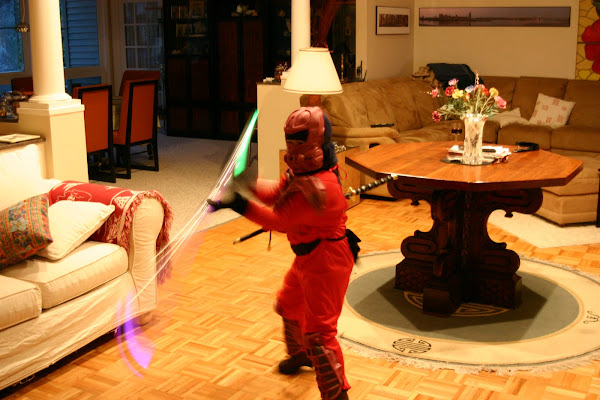

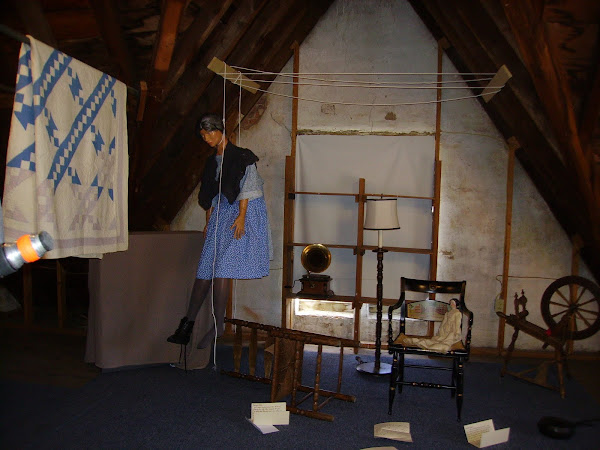
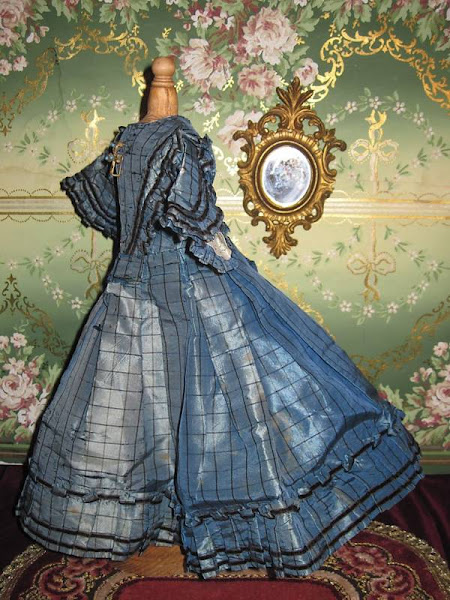wCWk~%24(KGrHqV,!h8Ew5GsnS3dBMUy3MzVPg~~_3.jpg)


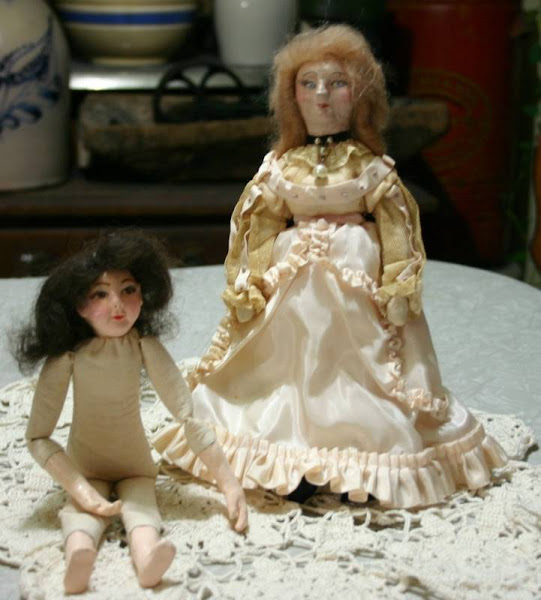









































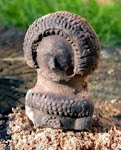
















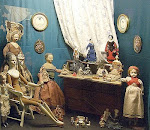



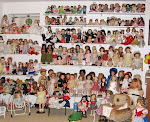
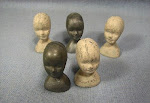



No comments:
Post a Comment